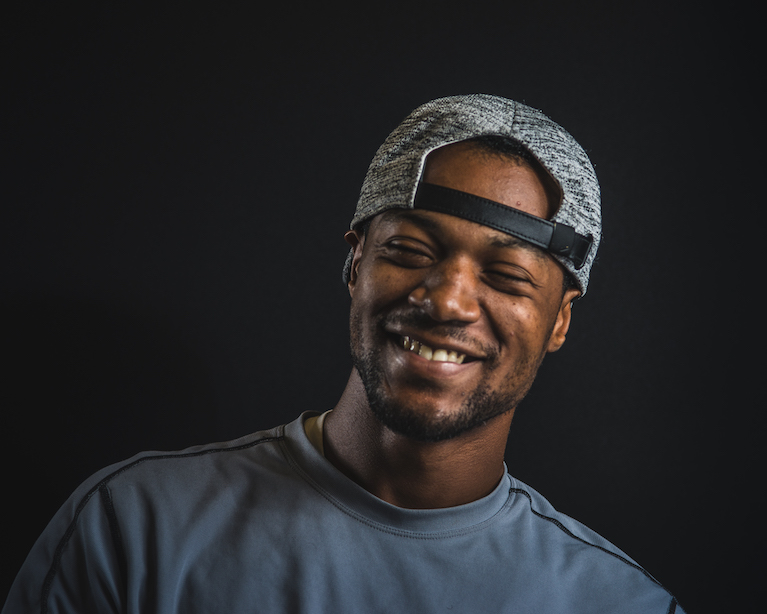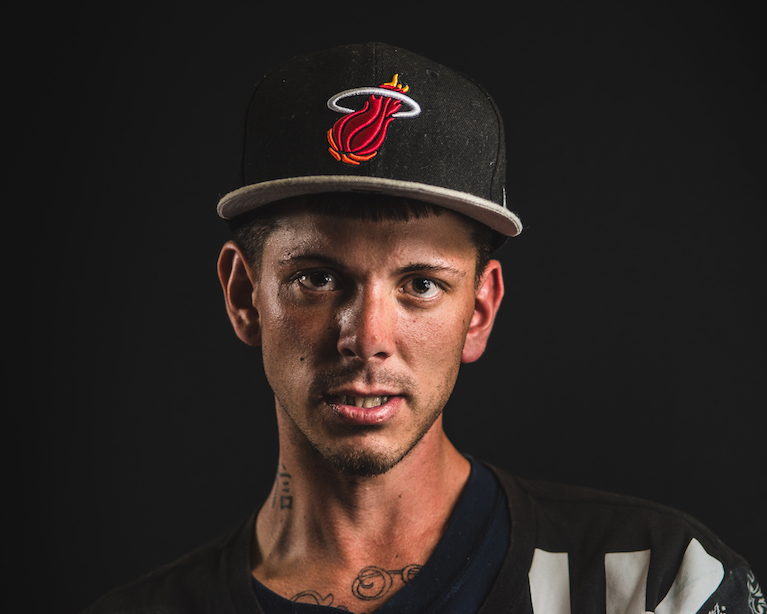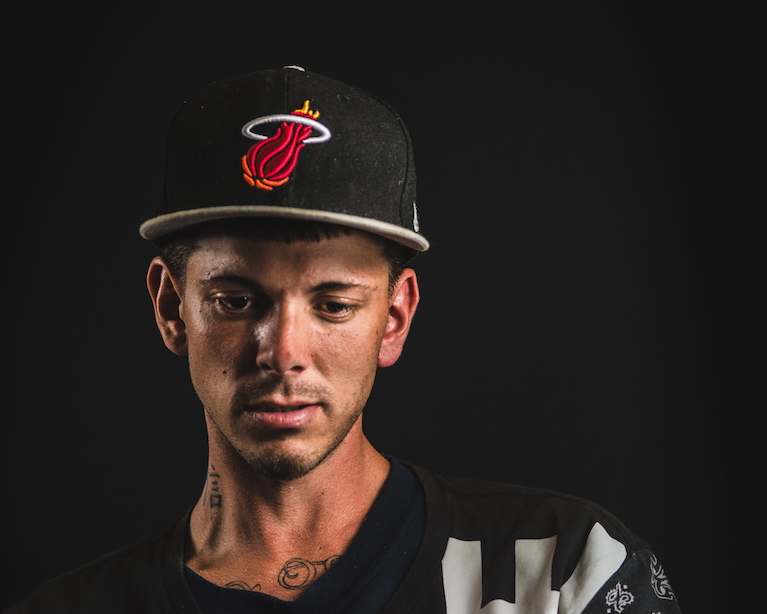Activist Lab Debuts New ‘Life on Albany’ Photos.

The Activist Lab unveiled a new set of photos from “Life on Albany” in the lobby of the Crosstown building on October 25. The ongoing photographic project seeks to challenge the stigmatizing narrative about the area unfortunately characterized as “Methadone Mile,” by showing the faces of people experiencing homelessness, addiction, and mental illness down the street from SPH.
Liam P. Hunt, the Activist Lab’s educational technologist, is the photographer behind the series. While his previous 14 portraits were taken in rapid succession out on Albany Street, for the new series Hunt and Harold Cox, director of the Activist Lab and associate dean for public health practice, took photos of three volunteer portrait subjects in a nearby photography studio while spending hours talking with them about their experiences and aspirations.
Taking the photos in a studio, rather than out in the neighborhood, was about more than lighting, Hunt said at a gallery talk for the new photos. Photographing Mark, Taylor, and Derek on a black background, then complementing the portraits with excerpts from their own stories, was meant to shift the Albany Street narrative. “With these photos, you don’t necessarily know that they’re homeless,” Hunt said. “It’s about them as people.”
Mark, 24
“Life is kinda confusing for me. From my perspective, more things than not aren’t quite what they seem. It’s like there’s a veil. There’s always, like, somebody behind the scenes, pulling the strings. My goal, eventually, is to be totally in charge of myself… have a lot of money… I’ve always thought of having a nice little boat and doing some sailing.”
Derek, 25
“I overdosed. He [a friend] got me into Boston CAB [treatment center] the same night. I worked with a caseworker every day, every day I asked any word on this holding, any word on that holding… do you think I’m going to get placed out of here? And they just said, “I don’t know, buddy.” The whole time I was there I only saw one person get placed into further treatment. Everyone just got sent back to the street. So there I go, back onto the street.”
Taylor, 29
“[I’m scared that] I’m going to be stuck this way for a while. Not just homeless. Not making moves, or having a better future or having goals. Maybe I’m not what I thought I was. Maybe I’m like everybody else. Not worth it. Can’t try. Just stuck…. I just wish that everybody could feel a sense of security and safety – that every person deserves – a little bit to be themselves, and to be happy, a little bit of happiness for everybody.”
Derek and Taylor
Derek: “I heard that there is one [shelter] that is co-ed. But I haven’t heard anything else about it. I don’t know where it is.”
Taylor: “Sometimes we don’t stay together.”
Derek: “Yeah, sometimes this one [Taylor] just takes off and I don’t see her for a couple days.”
Taylor: “[I go] different places. I don’t know. Sometimes I like to go by myself. There are so many things about being homeless that people don’t know. Like when everything closes down at night all the stores are closed and like everything’s done and there aren’t any cars in the street anymore—it’s like there are crews of homeless. Every area and little neighborhood has its own group of homeless kids. And the ages range, so young… and it goes up to old people. But so many young people, when I’m out there, there’s 20-year-olds, stuck in that generation of drugs, the heroin epidemic.”











Comments & Discussion
Boston University moderates comments to facilitate an informed, substantive, civil conversation. Abusive, profane, self-promotional, misleading, incoherent or off-topic comments will be rejected. Moderators are staffed during regular business hours (EST) and can only accept comments written in English. Statistics or facts must include a citation or a link to the citation.